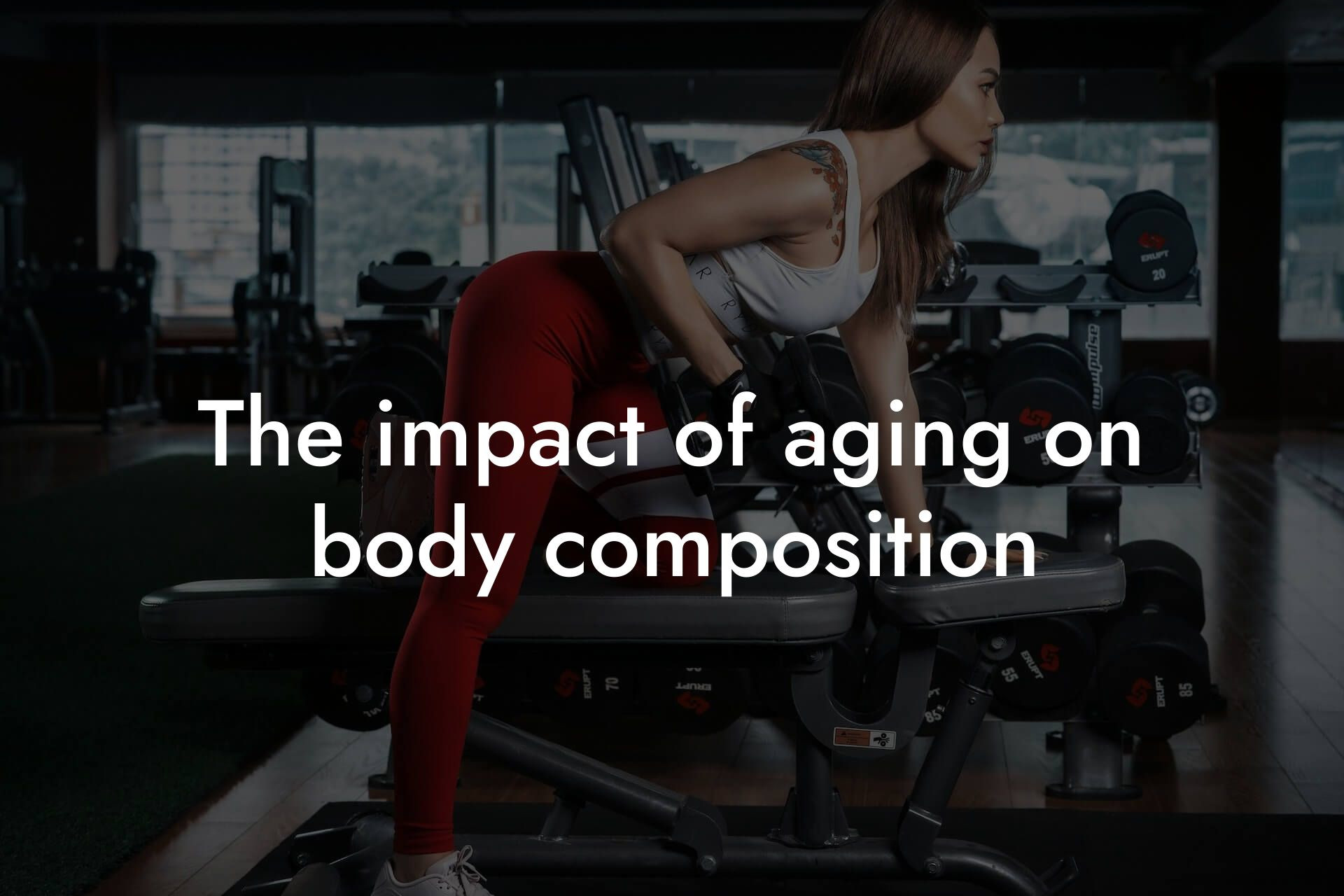As a high-earning professional, you understand the importance of maintaining a healthy and aesthetically pleasing physique. At Tano Performance Group, we're committed to providing you with the tools and knowledge you need to achieve your body composition goals. One essential aspect of this is understanding scientific studies on body composition. In this article, we'll guide you through the process of reading and interpreting scientific studies, empowering you to make informed decisions about your health and fitness.
Table of Contents
Why Scientific Studies Matter
Scientific studies on body composition provide valuable insights into the effects of various interventions, such as exercise and nutrition, on body fat, muscle mass, bone density, and other aspects of body composition. By understanding the results of these studies, you can make informed decisions about your own body composition goals and develop a personalized plan to achieve them.
Understanding Research Design
When reading a scientific study, it's essential to understand the research design. This refers to the methodology used to conduct the study, including the type of study, sample size, and data collection methods. Common research designs include:
Randomized Controlled Trials (RCTs): Participants are randomly assigned to either an intervention group or a control group to compare the effects of the intervention.
Observational Studies: Researchers observe and record data from participants without intervening, often to identify patterns or correlations.
Case-Control Studies: Researchers compare data from participants with a specific condition or outcome to those without it.
Identifying Study Limitations
Every scientific study has limitations, which can impact the validity and generalizability of the results. When reading a study, look for limitations such as:
Small sample size: A small sample size may not be representative of the larger population.
Selection bias: The sample may not be randomly selected, leading to biased results.
Measurement errors: Inaccurate or unreliable measurement tools can affect the results.
Funding bias: The study may be funded by an organization with a vested interest in the outcome.
Understanding Statistical Analysis
Statistical analysis is used to identify patterns and trends in the data. When reading a study, look for the following statistical concepts:
P-values: A measure of the probability that the results are due to chance. A p-value of 0.05 or less indicates statistical significance.
Confidence intervals: A range of values within which the true population parameter is likely to lie.
Effect size: A measure of the magnitude of the effect, such as the difference in body fat percentage between groups.
Interpreting Results
When interpreting the results of a study, consider the following:
Look for significant findings: Are the results statistically significant? Do the findings support the research hypothesis?
Consider the practical significance: Are the results meaningful in real-world terms? Do they have implications for your body composition goals?
Evaluate the conclusions: Do the conclusions follow logically from the results? Are they supported by the data?
Applying Study Findings to Your Body Composition Goals
Once you've understood the study results, you can apply the findings to your own body composition goals. Ask yourself:
What are the key takeaways from the study?
How can I apply these findings to my own training and nutrition plan?
What are the potential limitations and considerations I should be aware of?
Using DEXA Scans to Inform Your Body Composition Goals
At Tano Performance Group, we use DEXA (Dual-Energy X-ray Absorptiometry) scans to provide a comprehensive body composition assessment. By combining the insights from scientific studies with the data from your DEXA scan, you can develop a personalized plan to achieve your body composition goals.
DEXA scans provide accurate measurements of body fat percentage, lean mass, bone density, and other aspects of body composition.
By tracking changes in your body composition over time, you can refine your training and nutrition plan to optimize your results.
Our team of experts will work with you to interpret your DEXA scan results and develop a customized plan to help you achieve your goals.
Frequently Asked Questions
What is the importance of understanding scientific studies on body composition?
Understanding scientific studies on body composition is crucial for making informed decisions about your fitness and health goals. By grasping the concepts and methodologies used in these studies, you can separate fact from fiction, identify effective strategies, and avoid wasting time and resources on ineffective approaches. As a high-earning professional interested in your physical appearance, it's essential to stay informed and make data-driven decisions to achieve your goals.
What are the common types of scientific studies on body composition?
There are several types of scientific studies on body composition, including cross-sectional studies, longitudinal studies, intervention studies, and meta-analyses. Cross-sectional studies examine a population at a single point in time, while longitudinal studies follow a population over a longer period. Intervention studies investigate the effects of a specific treatment or intervention, and meta-analyses combine data from multiple studies to draw more comprehensive conclusions.
What is the difference between correlation and causation in scientific studies?
Correlation refers to the statistical relationship between two variables, whereas causation implies that one variable directly influences the other. In body composition studies, correlation does not necessarily imply causation. For example, a study may find a correlation between high protein intake and increased muscle mass, but it's essential to determine whether protein intake is the cause of the increased muscle mass or if other factors are at play.
How do I identify a well-designed scientific study on body composition?
A well-designed scientific study on body composition should have a clear research question, a suitable study population, a robust methodology, and appropriate statistical analysis. Look for studies with a large sample size, a long duration, and a randomized controlled trial (RCT) design. Additionally, check if the study has been published in a reputable scientific journal and if the authors have declared any conflicts of interest.
What is the role of confounding variables in scientific studies on body composition?
Confounding variables are factors that can influence the outcome of a study and lead to misleading conclusions. In body composition studies, common confounding variables include age, sex, genetics, and lifestyle factors such as diet and exercise. Researchers should control for these variables to ensure that the results are due to the intervention or treatment being studied, rather than other factors.
How do I interpret the results of a scientific study on body composition?
When interpreting the results of a scientific study on body composition, pay attention to the primary outcome measures, such as changes in body fat percentage or lean body mass. Look for the effect size, which indicates the magnitude of the change, and the p-value, which indicates the probability of the results occurring by chance. Also, consider the study's limitations and potential biases to put the results into perspective.
What is the significance of p-values in scientific studies on body composition?
P-values indicate the probability of obtaining the observed results by chance, assuming that there is no real effect. A p-value of 0.05 or less typically indicates statistical significance, meaning that the results are unlikely to be due to chance. However, p-values should be interpreted in conjunction with other factors, such as the effect size and clinical significance, to determine the practical importance of the findings.
Can I apply the results of a scientific study on body composition to my own life?
While scientific studies provide valuable insights, it's essential to consider the individual differences between study participants and yourself. Factors such as age, sex, genetics, and lifestyle can influence the effectiveness of a particular intervention or treatment. Consult with a qualified healthcare professional or registered dietitian to determine the best approach for your specific needs and goals.
What is the role of body fat percentage in overall health and fitness?
Body fat percentage is a crucial indicator of overall health and fitness. Excess body fat is associated with an increased risk of chronic diseases, such as diabetes and cardiovascular disease. Maintaining a healthy body fat percentage, typically between 10-20% for men and 15-25% for women, is essential for optimal health and physical performance.
How do I measure body fat percentage accurately?
There are several methods to measure body fat percentage, including dual-energy X-ray absorptiometry (DXA), hydrostatic weighing, and skinfold measurements. DXA is considered the gold standard, as it provides a highly accurate measurement of body fat percentage. However, skinfold measurements can also provide a reliable estimate when performed by a trained professional.
What is the difference between lean body mass and muscle mass?
Lean body mass refers to the total weight of your body minus fat mass, including muscle, bone, water, and other tissues. Muscle mass, on the other hand, specifically refers to the weight of your skeletal muscle tissue. While the terms are often used interchangeably, lean body mass provides a broader picture of your body composition, whereas muscle mass is a more specific indicator of muscular development.
How do I increase my lean body mass?
To increase lean body mass, focus on a combination of proper nutrition and resistance training. Ensure you consume adequate protein (1.6-2.2 grams per kilogram of body weight) and calories to support muscle growth. Engage in regular resistance exercises, such as weightlifting or bodyweight exercises, to stimulate muscle protein synthesis and growth.
What is the importance of bone density in body composition?
Bone density is a critical aspect of body composition, as it determines the strength and resilience of your skeleton. Maintaining optimal bone density is essential for preventing osteoporosis, fractures, and other bone-related disorders. Resistance training, adequate calcium and vitamin D intake, and sufficient sleep can help promote healthy bone density.
How do I improve my bone density?
To improve bone density, engage in regular weight-bearing exercises, such as running, jumping, or weightlifting. Ensure you consume adequate calcium (500-700 mg per day) and vitamin D (600-800 IU per day) through your diet or supplements. Additionally, maintain a healthy body weight, avoid excessive alcohol consumption, and get sufficient sleep (7-9 hours per night).
What is the role of genetics in body composition?
Genetics play a significant role in body composition, influencing factors such as body shape, muscle mass, and fat distribution. While genetics are not the sole determinant of body composition, they can affect your response to diet and exercise interventions. Understanding your genetic predispositions can help you tailor your approach to achieve optimal body composition.
Can I change my body composition through diet and exercise alone?
Yes, diet and exercise can significantly impact body composition. A well-structured diet that is tailored to your individual needs, combined with regular exercise, can lead to improvements in body fat percentage, lean body mass, and overall health. However, it's essential to be patient, as significant changes in body composition take time and consistent effort.
What is the importance of progressive overload in resistance training?
Progressive overload, which involves gradually increasing the intensity of your workouts over time, is essential for muscle growth and strength gains. This can be achieved by increasing the weight, reps, or sets over time, or by changing the exercise or rest period. Progressive overload stimulates muscle protein synthesis and helps to overcome plateaus.
How do I stay motivated to achieve my body composition goals?
Staying motivated requires setting specific, measurable, and achievable goals, as well as tracking your progress regularly. Celebrate small victories along the way, and don't be too hard on yourself when faced with setbacks. Surround yourself with a supportive community, and consider working with a personal trainer or coach to help you stay on track.
What is the role of stress management in body composition?
Chronic stress can negatively impact body composition by promoting fat storage, particularly in the abdominal region. Engage in stress-reducing activities, such as yoga, meditation, or deep breathing exercises, to help manage stress levels. Additionally, prioritize adequate sleep and maintain a healthy work-life balance to mitigate the effects of stress on body composition.
How do I incorporate high-intensity interval training (HIIT) into my workout routine?
HIIT involves short bursts of high-intensity exercise followed by brief periods of rest. Incorporate HIIT into your workout routine by adding exercises such as sprints, burpees, or jump squats to your routine. Aim for 15-20 minutes of HIIT per session, 2-3 times per week, to improve cardiovascular fitness and boost metabolism.
What is the importance of adequate sleep in body composition?
Adequate sleep is essential for body composition, as it plays a critical role in muscle recovery, hormone regulation, and metabolism. Aim for 7-9 hours of sleep per night to help support muscle growth, fat loss, and overall health.
How do I stay informed about the latest research on body composition?
Stay informed about the latest research on body composition by following reputable sources, such as scientific journals, academic institutions, and trusted health and fitness websites. Additionally, attend conferences, workshops, or seminars, and engage with experts in the field to stay up-to-date with the latest developments.
Here are some related articles you might love...
- The impact of aging on body composition
- The science behind fat loss supplements
- Personalized fitness and nutrition plans using AI
- The future of body composition analysis technology
- Understanding the role of hormones in body composition
- Debunking common fitness and health myths
- Exploring alternative fitness methods (e.g., cryotherapy, infrared saunas)
- Testosterone and its effects on muscle mass and fat distribution
- Biohacking for body composition and performance
Zak Faulkner
Zak Faulkner is a leading authority in the realm of physical health and body composition analysis, with over 15 years of experience helping professionals optimise their fitness and well-being. As one the experts behind Tano Performance Group, Zak has dedicated his career to providing in-depth, science-backed insights that empower clients to elevate their physical performance and overall health.
With extensive knowledge of DEXA technology, Zak specializes in delivering comprehensive body assessments that offer precise data on body fat, muscle mass, bone density, and overall physique. His expertise enables individuals to make informed decisions and achieve their fitness goals with accuracy and confidence. Zak’s approach is rooted in a deep understanding of human physiology, combined with a passion for helping clients unlock their full potential through personalised strategies.
Over the years, Zak has earned a reputation for his commitment to excellence, precision, and client-focused service. His guidance is trusted by top professionals who demand the best when it comes to their health. Whether advising on fitness programs, nutritional strategies, or long-term wellness plans, Zak Faulkner’s insights are a valuable resource for anyone serious about taking their health and fitness to the next level.
At Tano Performance Group, Zak continues to lead our Content Team revolutionising how professionals approach their physical health, offering unparalleled expertise that drives real results.




